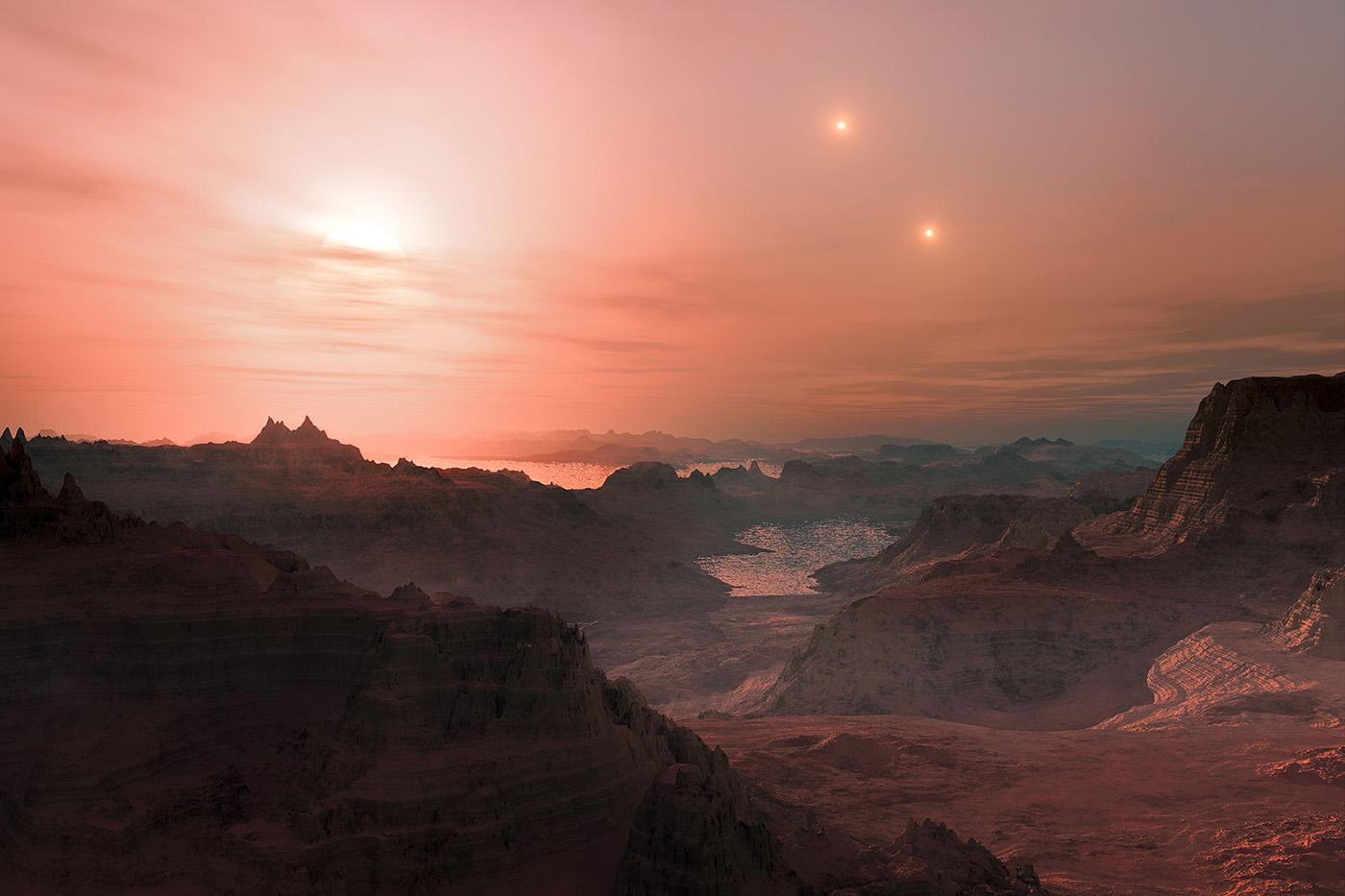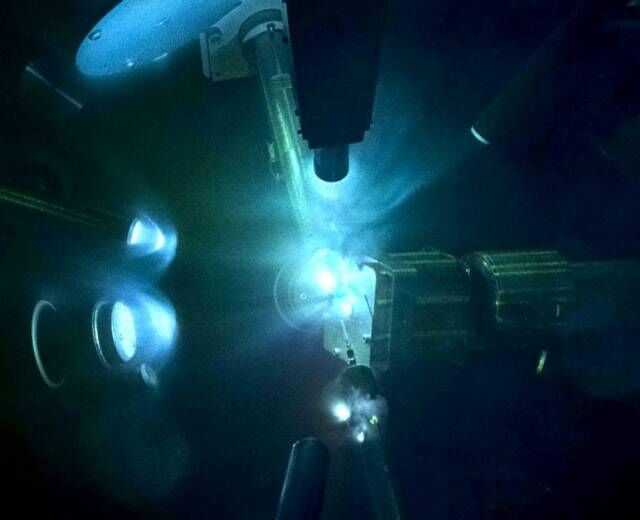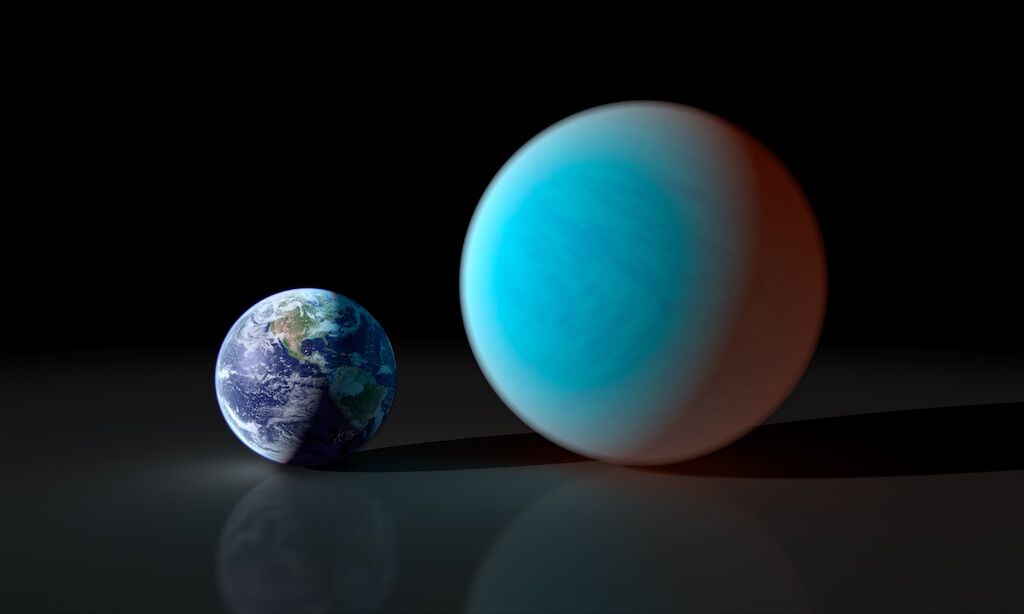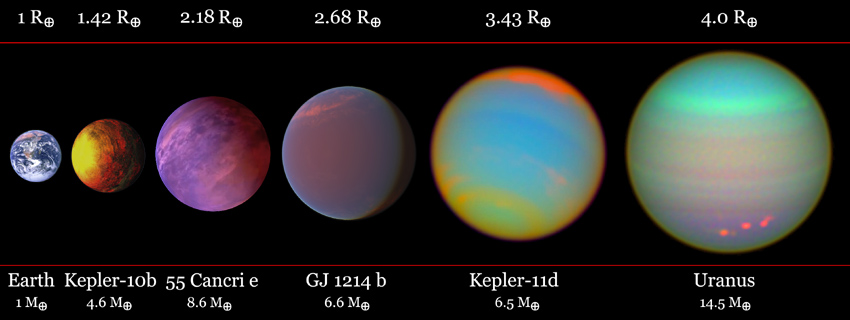Half of newly-discovered planetary systems with a sun-like star have one or more so-called “super-Earths”: planets with a mass larger than that of our planet but less than Neptune.

There is a mystery in our Galaxy, and astronomers around the world are working to solve it. The NASA Kepler mission revealed that planetary systems are common, and that, on average, each star has two planets in orbit around it. This is great news for SETI researchers, since it means that there are a lot of worlds out there to explore. Many of them may have liquid water, meaning that there is the possibility that life could exist elsewhere in our Galaxy. However, there is something unusual about some recently discovered planetary systems—half of those with a sun-like star have one or more so-called “super-Earths”: planets with a mass larger than that of our planet, but less than that of icy giant planets like Uranus or Neptune. What are they? We don’t really know.
These so-called super-Earths could be made of rock and metal or even ice and gas. Do they have oceans and atmospheres like Earth, are they mini-Neptunes, balls of hydrogen and helium, or are they simply scaled-up versions of Mercury? Since most of these planets were detected by the transit method, which doesn’t yet allow for spectroscopy, we can only speculate from complex models with not much information. We have good measurements of their size, but not their mass, and hence only a poor estimate of their surface gravity. Mass is one of the key parameters we need in order to understand the environment at the surface of a planet, and consequently the possibility of the existence of life on that world.
In 2018, to increase awareness of this mystery and hopefully start getting some answers, we decided to organize a special session at the American Geophysical Union (AGU) meeting. Every year, the AGU, whose mission is “to promote discovery in Earth and space science for the benefit of humanity,” has a meeting for around 25,000 scientists, most of them geophysicists, but also a few planetary astronomers.
This year’s meeting was held in Washington, DC in December—not a very good month on the U.S. East Coast, but that did not stop several scientists, including myself, from submitting and organizing a session entitled “Exogeoscience and the Habitability of Super-Earths.”
We called for abstracts related to the emerging field of “exogeoscience,” or the study of how galactic, stellar system, atmospheric, and internal processes of terrestrial exoplanets affect the properties, evolution, and observable features of their surfaces and interiors. We also called for discussions on terrestrial exoplanet interiors and surfaces, with the goal of better understanding the habitability of those super-Earths . In other words, we invited scientists who study the formation, evolution, and nature of unknown super-Earths to reveal their thoughts on this topic.
We started the session with discussions on the internal structure of super-Earths that are more massive than Earth and consequently should have a different internal structures and crystalline composition. Most experiments never reach more than 300 GPa (3 million times the pressure at the surface of the Earth), which is close to the core pressure of Earth (360 GPa). Geophysicist June Wicks, professor at Johns Hopkins University, conducts laboratory studies on how iron and silicon alloys respond to extraordinary pressures, up to 1,314 GPa, using a new method of simultaneous X-ray diffraction and shock experiments. Her team discovered a new crystal structure for lower-silica alloy and that at high pressures, the iron-silicon alloys reach a density 2.5 times greater than on the surface of Earth, i.e., comparable to gold or platinum. Research conducted since this experiment investigated how other light elements, such as carbon or sulfur, affect the structure and density of iron at ultrahigh pressure conditions, and today Wicks and her colleagues can further constrain models of exoplanets’ interior, including super-Earths.

A research scientist at Arizona State University, Cayman Unterborn studies the diversity of those rocky worlds using statistical analysis. Kepler/K2 data revealed a clear separation of the planet populations. Planets with less than 1.5 Earth radius are rocky, while larger super-Earths are likely to be mini-Neptunes with large gaseous envelopes. The team has developed an open-source mass-radius-composition calculator called ExoPlex, so any of us can derive the interior of a planet from basic parameters like its size, composition, and host star metallicity. This is a tool needed by our community in order to understand the most common super-Earths soon to be discovered by the transit space telescopes like TESS and the future Plato.
Of course, without more information about super-Earths, most of this work remains very speculative. We are like lions in the savanna trying to imagine how a penguin could live without having any idea about the existence of Antarctica or even about ice. We need to continue to explore the worlds around us by building instruments that will help us collect information about those worlds, and not only their size. The future James Webb Space Telescope (JWST), as well as space missions like Ariel, could help sniff the atmosphere of super-Earths, if the planet is transiting its host star. Ultimately, we will want to build telescopes that will be able to collect and image these weird super-Earths. NASA is already thinking about this with the HabEx, LUVOIR, and Origins space telescopes (see our SETI Talk on this topic here). Other groups have less ambitious but faster-paced initiatives like Project Blue, a dedicated space telescope that could image one of those super-Earths around the Alpha Centauri star system.
Future instruments will tell us more about these mysterious worlds. We will know if they are apparently lifeless, like Venus or (possibly) Mars, or weird water-worlds covered by a global ocean. If, like Earth, they have a biosphere, we can be sure that this extraterrestrial life will be different from ours since it has managed to adapt to stronger gravity.
Whatever we find, whatever we see on those super-Earths, I am confident will astonish and fascinate us.
P42A: Exogeoscience and the Habitability of Super-Earths, AGU Fall Meeting, Washington DC 10-14 Dec 2018 was organized by Rory Barnes (University of Washington Seattle Campus), Francois Soubiran (University of California Berkeley), Franck Marchis (Carl Sagan Center, SETI Institute, and Anat Shahar (Carnegie Institution of Washington).
https://agu.confex.com/agu/fm18/meetingapp.cgi/Session/61154
https://agu.confex.com/agu/fm18/meetingapp.cgi/Session/61146







